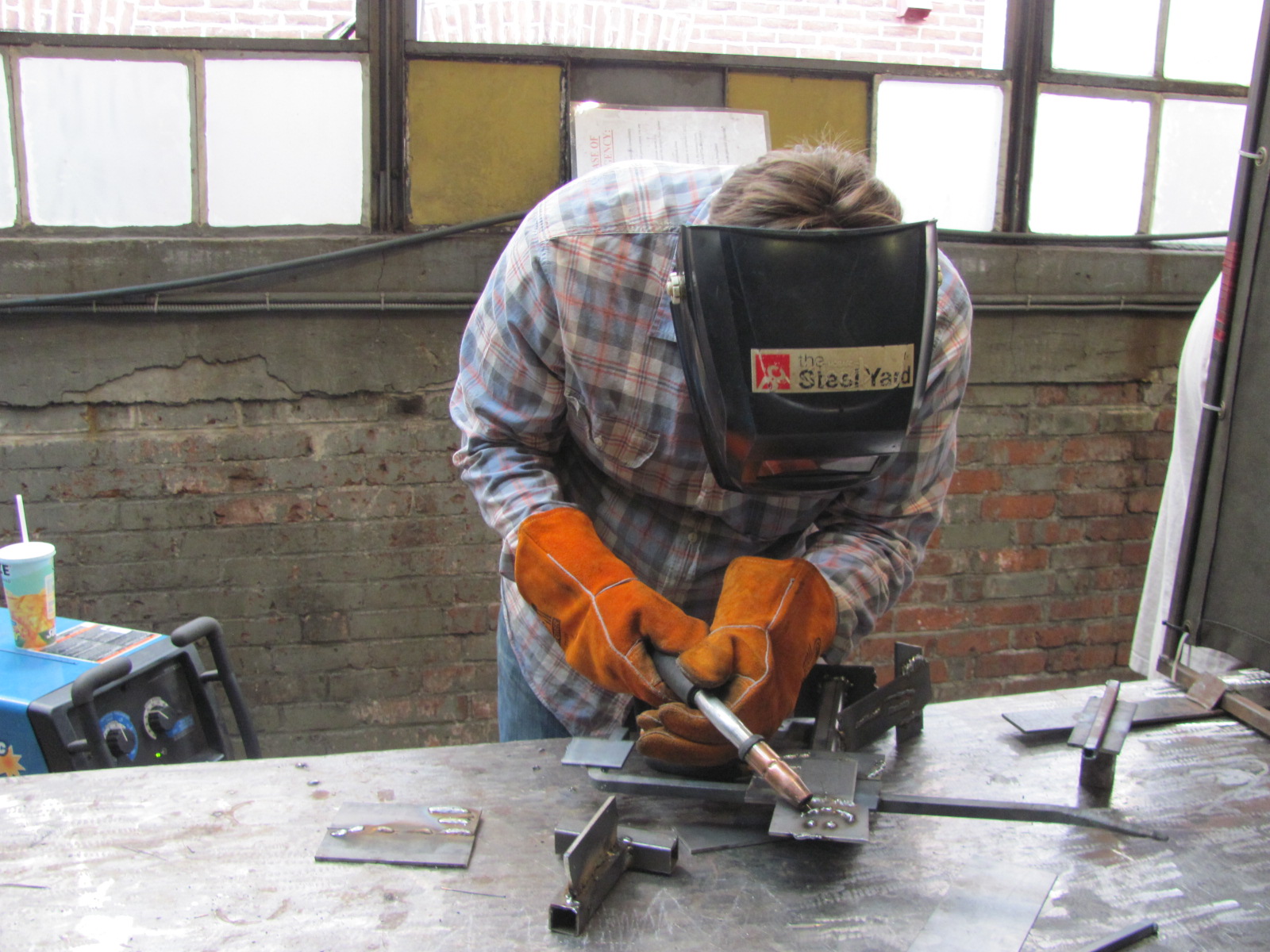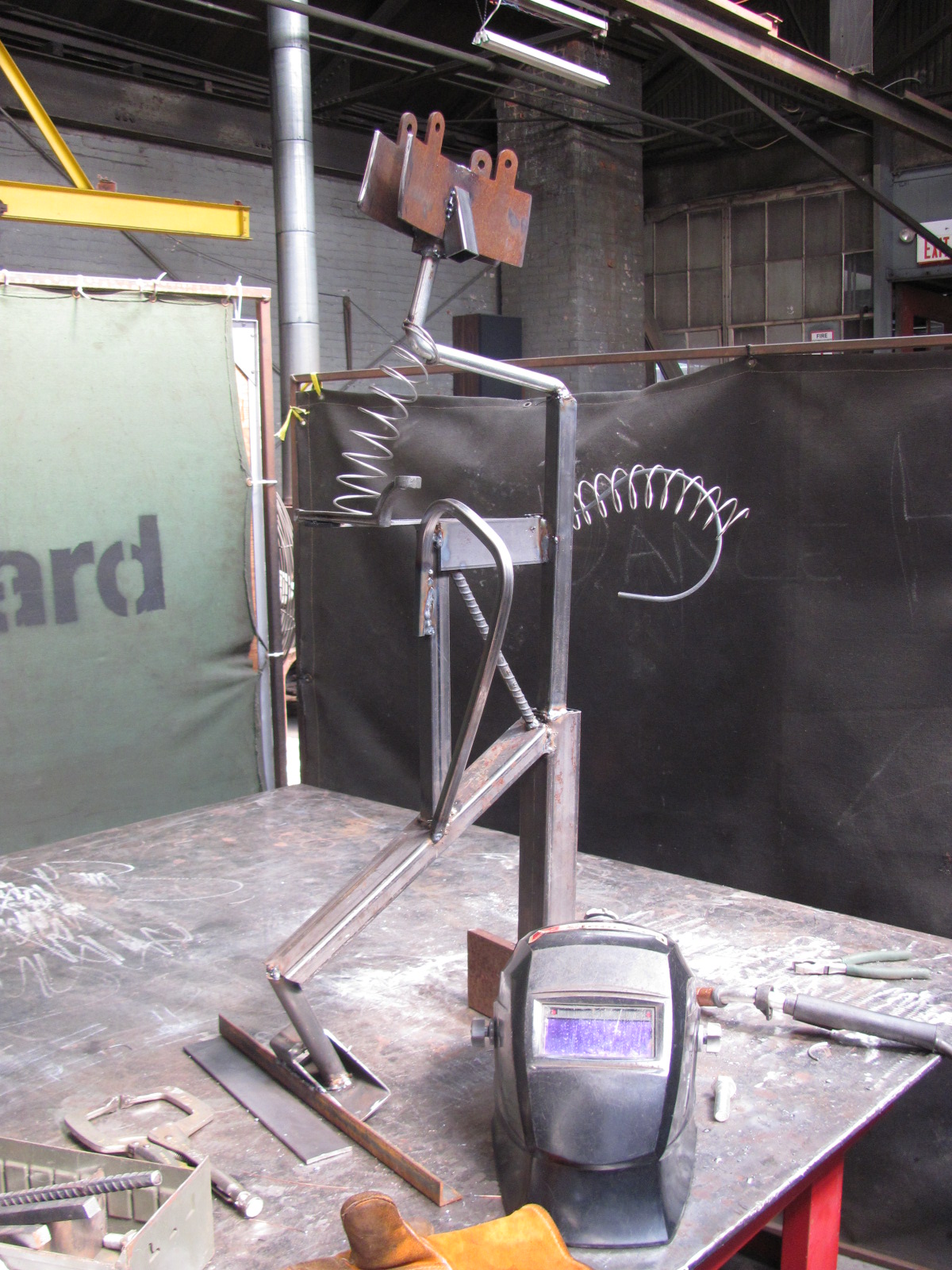Why should engineers weld? Because we design welds, and actually doing welding will help us understand and possibly design them better. We need to understand the tools and the lingo (for example, saying "MIG" is more common than than engineer's GMAW).
Here is the MIG welding machine: The gases, argon and CO2, in the GMAW method create the shield to protect the weld wire from the atmosphere. Try finding a local workshop or welding class in your area. Use an oxy-acetyline torch to cut through steel or bend steel, then use grinders to cut or smooth the edges. Use a steel chop saw and sander, or a sand blaster to clean the mill scale. Weld joints together using stick or MIG welding, adjust the voltage and wire speed to determine how to lay down quality welds. Weld butt joints, t-joints, even flare bevel groove joints to determine which method and electrode orientation is best. Create a sculpture, add and weld pieces to it. Even bolt members together or learn how tap plates (drill holes and add threads). If possible, use a plasma cutter and add letters to your sculpture and cut curves.
Try finding a local workshop or welding class in your area. Use an oxy-acetyline torch to cut through steel or bend steel, then use grinders to cut or smooth the edges. Use a steel chop saw and sander, or a sand blaster to clean the mill scale. Weld joints together using stick or MIG welding, adjust the voltage and wire speed to determine how to lay down quality welds. Weld butt joints, t-joints, even flare bevel groove joints to determine which method and electrode orientation is best. Create a sculpture, add and weld pieces to it. Even bolt members together or learn how tap plates (drill holes and add threads). If possible, use a plasma cutter and add letters to your sculpture and cut curves.
Here is a alien-robot I created at a recent welding workshop...
 Here is a jig I used to be able to cold-bend a piece of 1/2 bar...
Here is a jig I used to be able to cold-bend a piece of 1/2 bar...
 I learned that welding poorly is really easy, and welding well is incredibly hard. You won't be a welder after a couple classes, but you will certainly understand welding a bit better, and with this understanding you will become better at designing and inspecting welds.
I learned that welding poorly is really easy, and welding well is incredibly hard. You won't be a welder after a couple classes, but you will certainly understand welding a bit better, and with this understanding you will become better at designing and inspecting welds.

